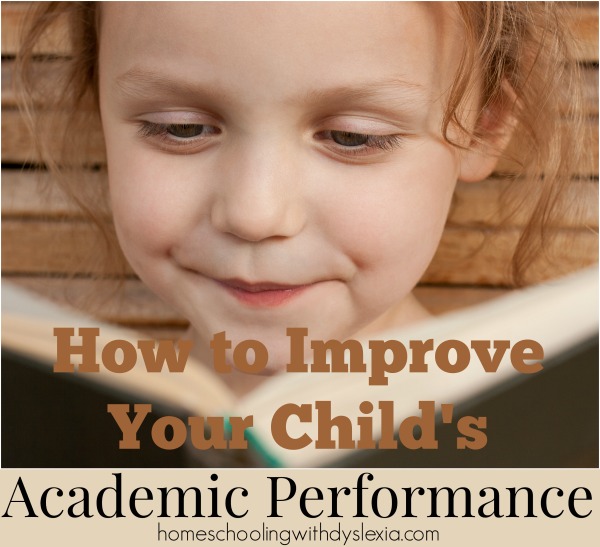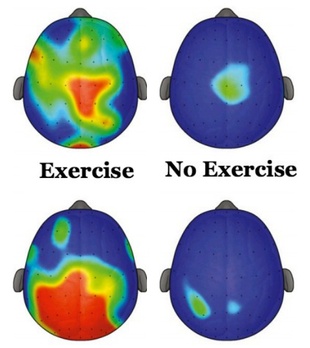Whether your kids attend a private, public or home school, all parents want for their kids to perform academically to the best of their ability.

Research has shown some interesting connections to the simple act of exercise on academic performance. The medical journal Pediatrics recently published research that found kids who took part in a regular physical activity program showed important enhancement of cognitive performance and brain function. The findings, according to University of Illinois professor Charles Hillman and colleagues, “demonstrate a causal effect of a physical program on executive control, and provide support for physical activity for improving childhood cognition and brain health.”
What is Executive Control?
The improvements in this case reportedly came in executive control, which consists of inhibition (resisting distraction, maintaining focus), working memory, and cognitive flexibility (switching between tasks).
The images above show the brain activity in the group of kids who participated in the exercise program as opposed to the group that didn’t. The difference is profound.
Another study found that a 12-week exercise program improved math and reading test scores in all kids, but especially in those with signs of ADHD. Executive functioning is impaired in ADHD, and tied to performance in math and reading.
John Ratey, an associate professor of psychiatry at Harvard, suggests that people think of exercise as medication for ADHD. Even very light physical activity improves mood and cognitive performance by triggering the brain to release dopamine and serotonin, similar to the way that stimulant medications like Adderall do.
Simple Ways to Implement Exercise in Your Home
So how do we get our kids moving?
Here are 5 ways to implement an exercise program in your home.
1. Get out in nature. Although this may not be doable on a daily basis, it can be highly motivating for kids (and parents) to be exploring the wilderness as they exercise. Whether you explore a nearby hiking trail or visit a local park, getting outside together as a family builds happy memories as well as physical fitness.
2. Use the TV. Understanding that not all of us live in climates where outdoor exercise is possible all the time, there are many excellent exercise DVDs that can be played right in the comfort (and warmth) of your own home.
3. Sports teams. All of our kids have enjoyed taking sports or dance classes through various community centers in our area. Whether a swim team, soccer team, karate or ballet, these activities inspire kids to enjoy moving and can strengthen other skills such as a sense of sportsmanship and teamwork.
4. Limit screen time. This isn’t actually an exercise program per se, however, when we changed our kids media consumption habits by dramatically limiting their screen time, guess what they did? Yup, they went outside to play. We simple provided the tools – a trampoline, bikes, skateboards, jump ropes balls etc. and the kids took care of the rest.
5. Join a local gym or YMCA. As our kids got older and were less likely to play for exercise, we joined an inexpensive gym that provided a modest facility where all of us could exercise.
If your kids are resistant to exercising, try making it a family affair. Schedule a time each day that your family is doing some form of exercise, whether it is walking or running on a treadmill, walking or running around the block, taking the dog for a walk or watching an exercise video.
For more information on ADD and ADHD, read the following posts:
The #1 Non-Drug Treatment for ADD and ADHD







My child is facing problems in mathematics and is not able to comprehend certain things in science